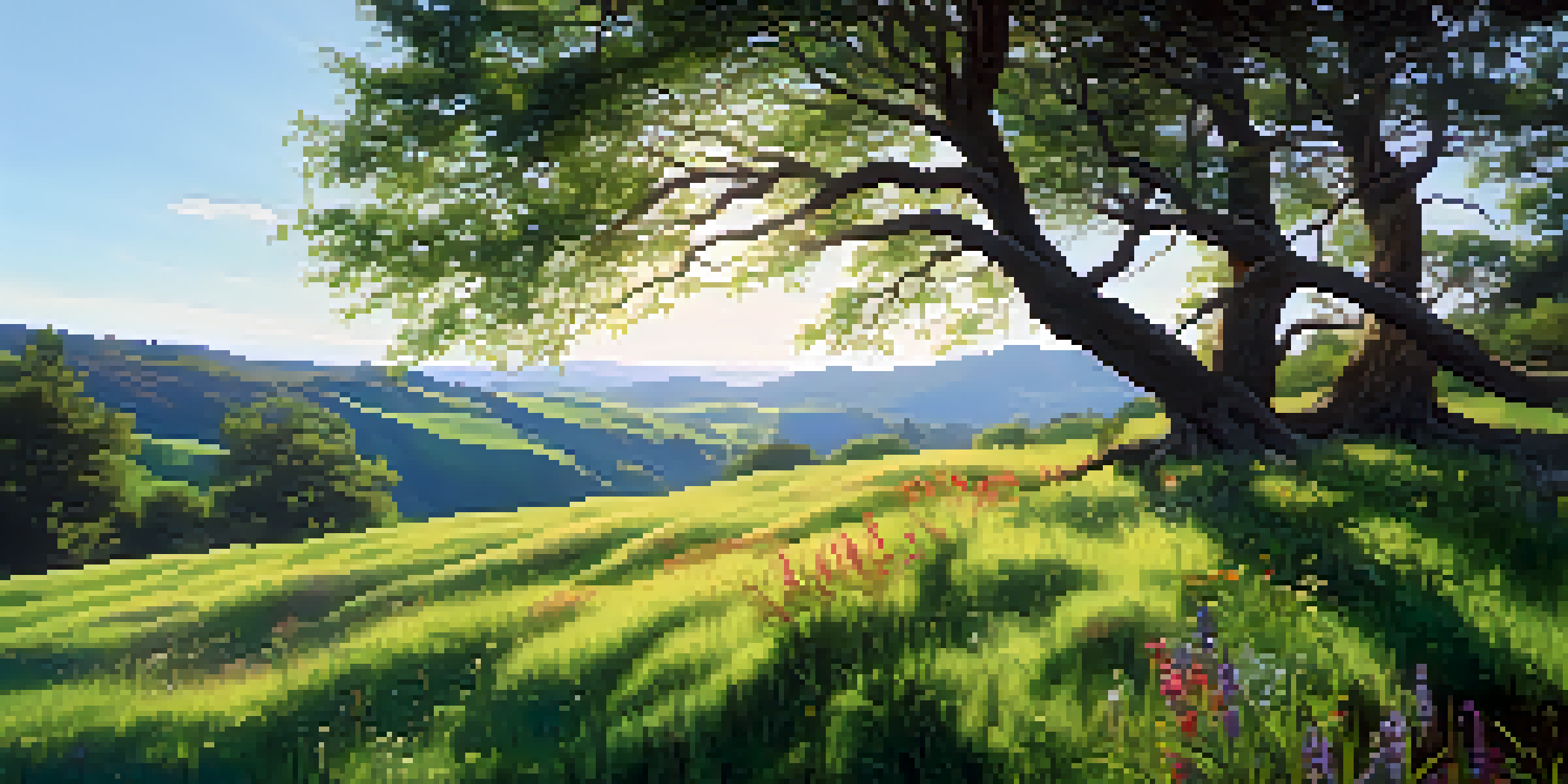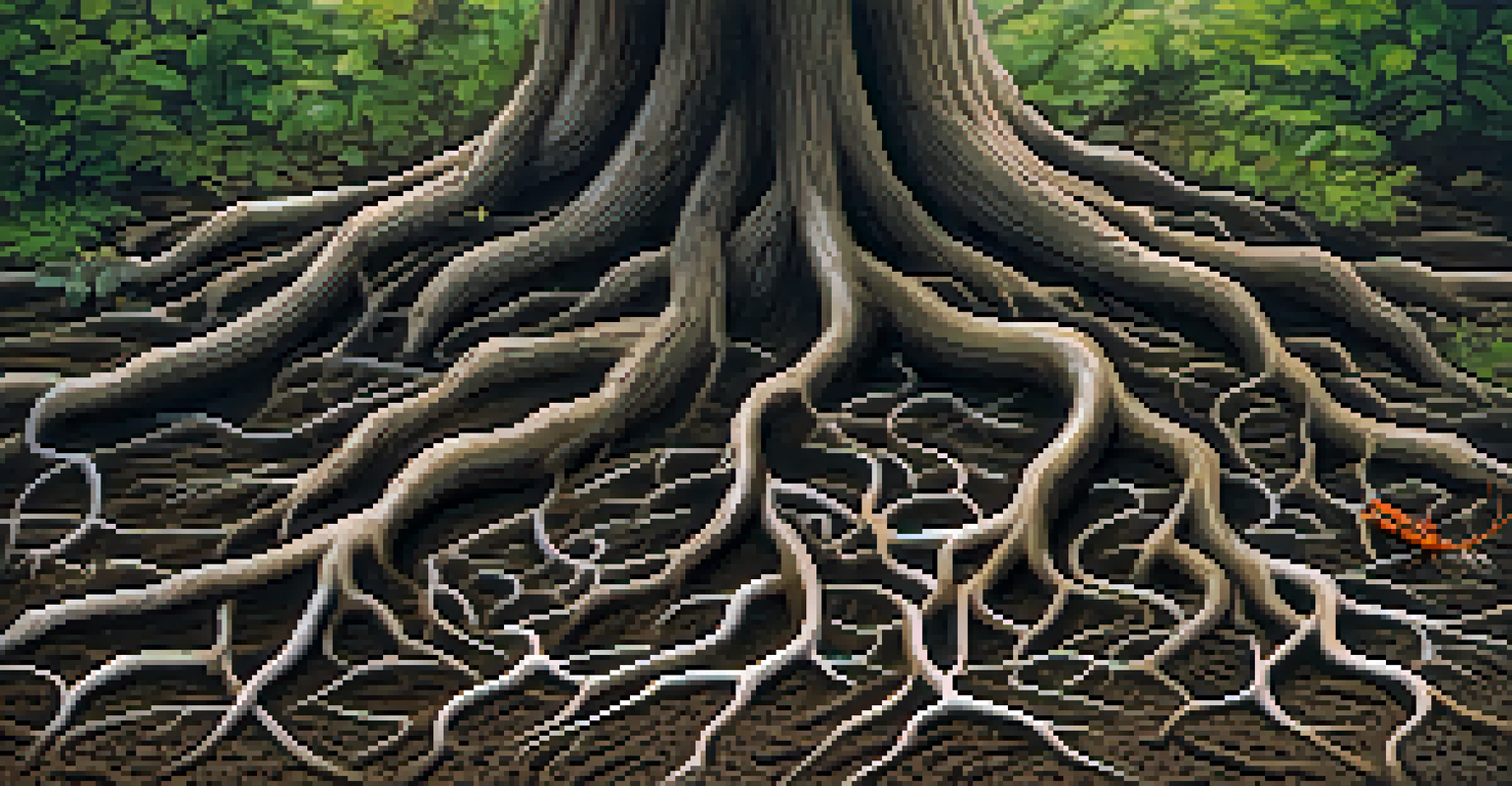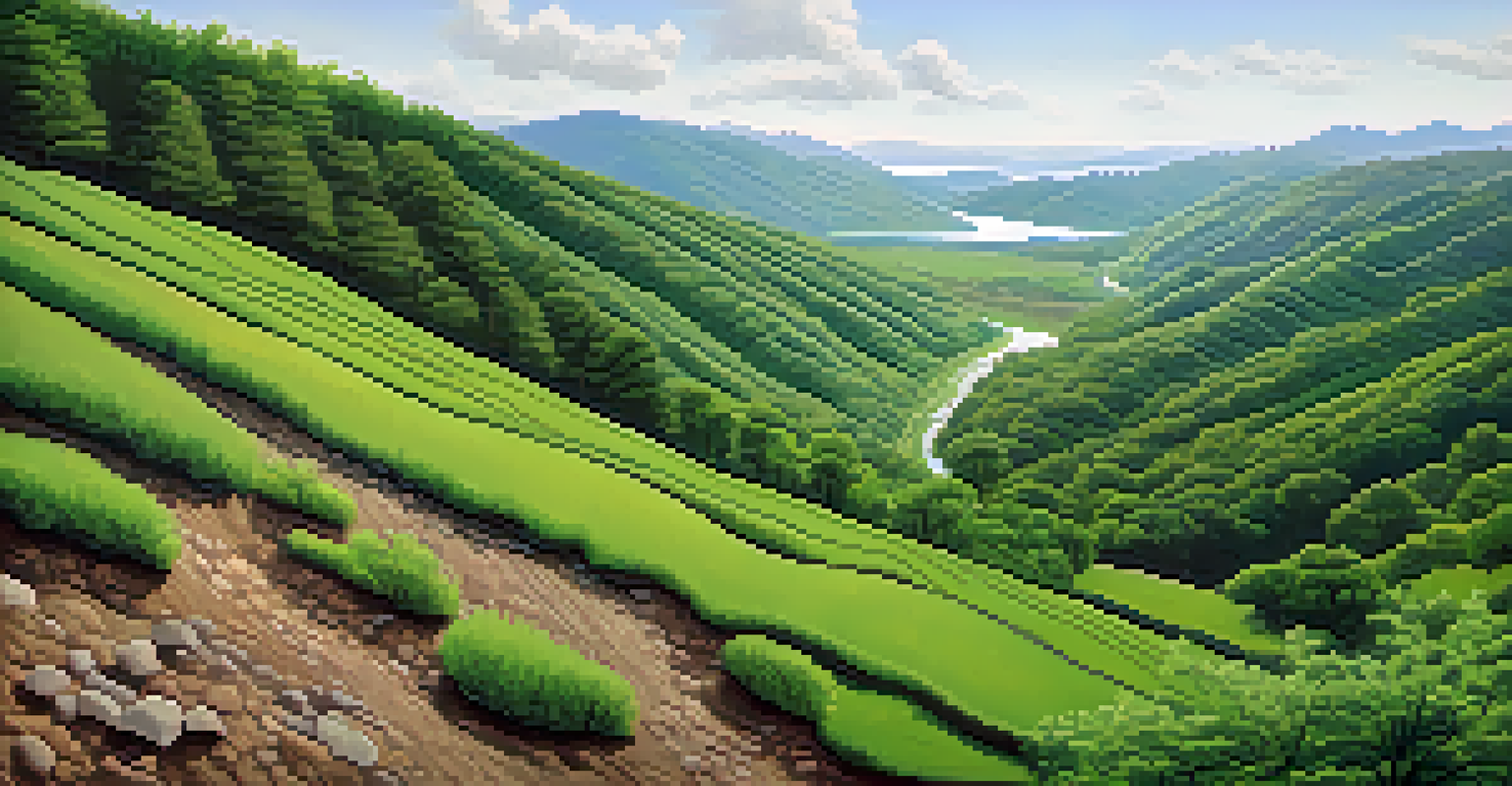How Vegetation Impacts Soil Erosion and Land Stability

Understanding Soil Erosion: A Natural Process
Soil erosion is a natural process where topsoil is worn away by wind, water, or other forces. This process can occur gradually or suddenly, often leading to significant environmental challenges. When soil is eroded, the nutrients essential for plant growth are lost, which can result in reduced agricultural productivity and biodiversity.
Soil is the foundation of all terrestrial life; without it, we cannot grow food or sustain ecosystems.
Imagine a sandcastle on the beach. When the waves come crashing in, the structure begins to wash away, losing its form and integrity. Similarly, when soil erosion occurs, the foundation of our ecosystems is compromised, affecting everything from plant life to water quality.
Understanding the causes and effects of soil erosion is crucial for developing strategies to combat it. By grasping the role of vegetation in this process, we can work towards a more sustainable approach to land management.
The Role of Vegetation in Soil Stability
Vegetation plays a vital role in stabilizing soil. The roots of plants anchor the soil in place, preventing it from being easily washed or blown away. This root system not only holds the soil together but also absorbs water, reducing the speed at which it runs off the surface.

Think of vegetation as nature's glue. Just as glue binds materials together, plant roots intertwine with soil particles, creating a robust structure that resists erosion. Without this natural binding agent, the soil becomes much more vulnerable to the elements.
Soil Erosion Threatens Ecosystems
Soil erosion, caused by natural forces and human activities, leads to the loss of vital nutrients and can drastically impact agricultural productivity and biodiversity.
Moreover, the presence of vegetation can also create a protective layer over the soil. Leaves and plants reduce the impact of rain on the soil surface, further minimizing erosion and promoting healthier land.
How Different Vegetation Types Impact Erosion
Not all vegetation is created equal when it comes to preventing soil erosion. For instance, deep-rooted plants are generally more effective than shallow-rooted species. Grasses, shrubs, and trees each contribute differently to soil stability, depending on their root structures and growth habits.
The planting of trees is the planting of hope.
Consider a meadow filled with deep-rooted grasses compared to a barren patch of land. The grasses provide a sturdy foundation, helping to absorb water and prevent erosion, while the barren land is left exposed and vulnerable. This contrast highlights how diverse plant life can dramatically influence land stability.
Additionally, vegetation cover can vary throughout the seasons. Seasonal changes affect how much protection the soil receives, which emphasizes the importance of maintaining diverse plant species that thrive in different conditions.
The Impact of Soil Composition on Vegetation Efficacy
The effectiveness of vegetation in preventing soil erosion also depends on soil composition. Soil rich in organic matter tends to support more diverse plant life, which can further enhance soil stability. Conversely, sandy or compacted soils might struggle to hold moisture and provide adequate support for plants.
Imagine trying to build a house on a sandy beach versus solid ground. The sandy surface may shift and settle, creating instability. Similarly, soil types affect how effectively vegetation can anchor itself and protect the land from erosion.
Vegetation Stabilizes Soil Effectively
Plants play a crucial role in preventing soil erosion by anchoring it with their roots and creating a protective layer against environmental forces.
Understanding the interplay between soil composition and vegetation is key for land management practices. By improving soil health, we can boost the benefits that vegetation provides in terms of erosion control.
The Benefits of Vegetation Beyond Erosion Control
The benefits of vegetation extend far beyond just preventing soil erosion. Healthy plant life contributes to improved air quality, enhanced biodiversity, and greater water retention in the soil. These factors collectively create a more resilient ecosystem.
Consider a forest. It's not just a collection of trees; it's a complex, thriving community that supports various wildlife and improves local climate conditions. This interconnectedness demonstrates how vegetation contributes to overall land stability and health.
Additionally, vegetation can also act as a buffer against extreme weather events, reducing the impact of floods and landslides. This further emphasizes the multifaceted role that plants play in maintaining the environment.
Human Impact: Deforestation and Soil Erosion
Human activities, particularly deforestation, have a significant negative impact on soil stability. When trees are cut down, the protective cover that helps prevent erosion is removed, leading to exposed soil that is susceptible to erosion by wind and rain. This can result in severe environmental consequences.
Imagine a hillside stripped of trees during a heavy rainstorm. Without the roots to hold the soil in place, the topsoil is likely to wash away, leading to mudslides and loss of fertile land. This scenario illustrates the drastic effects of human actions on the environment.
Human Actions Exacerbate Erosion
Deforestation and poor land management practices significantly increase soil erosion risk, highlighting the need for sustainable approaches to restore balance in ecosystems.
Addressing deforestation through reforestation and sustainable land management practices is crucial in mitigating soil erosion and promoting land stability. By prioritizing vegetation restoration, we can help restore balance to ecosystems that have been damaged.
Strategies for Enhancing Vegetation and Soil Stability
To combat soil erosion and enhance land stability, various strategies can be employed. These include planting cover crops, implementing contour farming, and creating buffer strips of vegetation along waterways. Each of these practices aims to reinforce soil and promote healthy ecosystems.
For example, cover crops like clover or rye can be planted during off-seasons to protect soil from erosion. Their roots help hold the soil together while also enriching it with nutrients. This practice not only prevents erosion but also improves soil quality over time.

Implementing these strategies requires collaboration between landowners, farmers, and environmental organizations. Together, we can create a more sustainable approach to land management that prioritizes both vegetation health and soil stability.